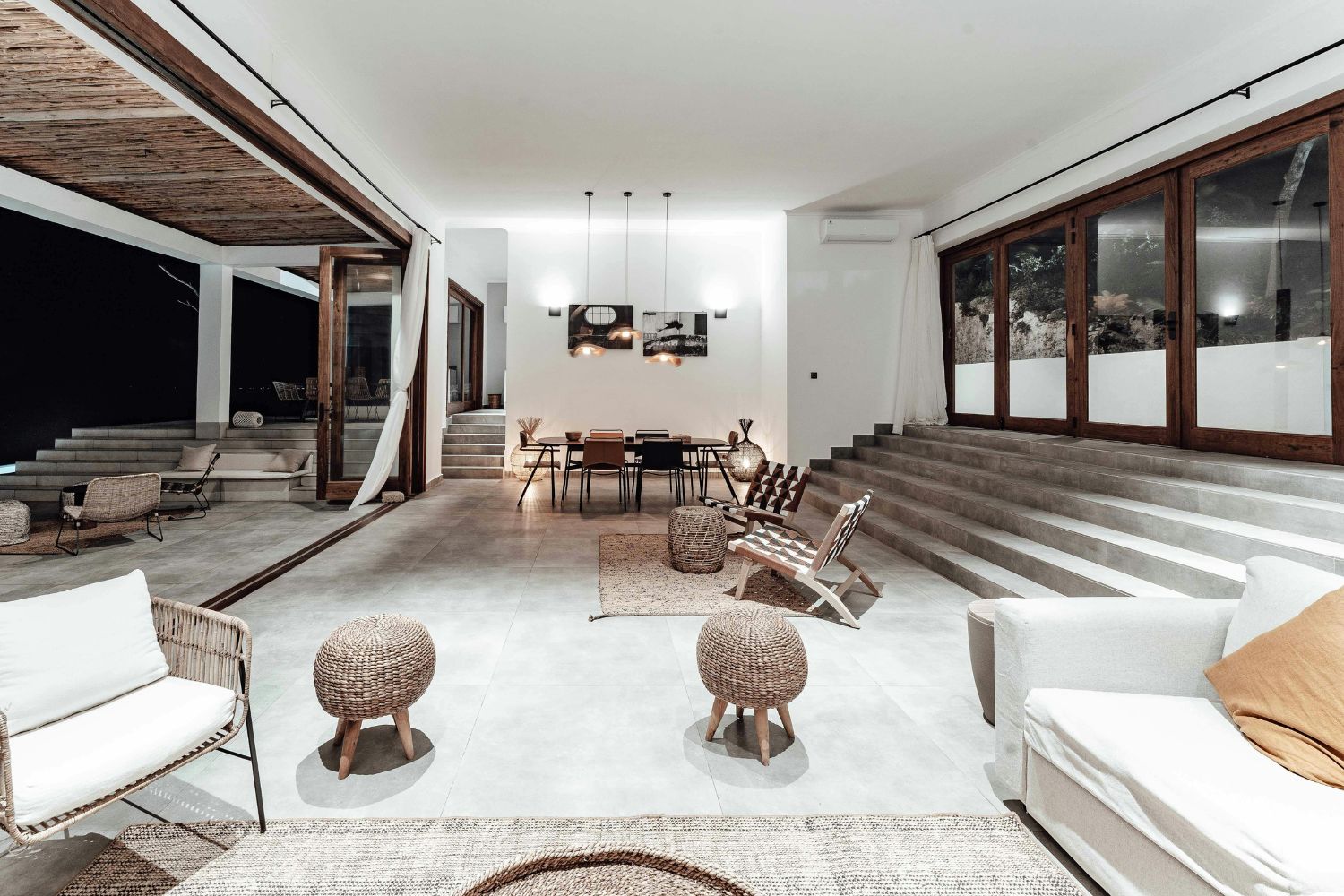- Home
- Articles
- Architectural Portfolio
- Architectral Presentation
- Inspirational Stories
- Architecture News
- Visualization
- BIM Industry
- Facade Design
- Parametric Design
- Career
- Landscape Architecture
- Construction
- Artificial Intelligence
- Sketching
- Design Softwares
- Diagrams
- Writing
- Architectural Tips
- Sustainability
- Courses
- Concept
- Technology
- History & Heritage
- Future of Architecture
- Guides & How-To
- Art & Culture
- Projects
- Interior Design
- Competitions
- Jobs
- Store
- Tools
- More
- Home
- Articles
- Architectural Portfolio
- Architectral Presentation
- Inspirational Stories
- Architecture News
- Visualization
- BIM Industry
- Facade Design
- Parametric Design
- Career
- Landscape Architecture
- Construction
- Artificial Intelligence
- Sketching
- Design Softwares
- Diagrams
- Writing
- Architectural Tips
- Sustainability
- Courses
- Concept
- Technology
- History & Heritage
- Future of Architecture
- Guides & How-To
- Art & Culture
- Projects
- Interior Design
- Competitions
- Jobs
- Store
- Tools
- More
Top Interior Design Suggestions for Small Spaces: Maximize Style and Functionality
Unlock the potential of your small space with our creative interior design tips! This article reveals smart strategies for maximizing functionality and style, focusing on innovative storage solutions, color schemes, and multifunctional furniture. Discover how to enhance ambiance with effective lighting while maintaining a cohesive look.

Living in a small space doesn’t mean we have to sacrifice style or comfort. In fact, it presents an exciting opportunity to get creative with our interior design choices. With the right approach, we can transform our compact areas into functional, beautiful havens that reflect our personality and meet our needs.
In this article, we’ll explore smart interior design suggestions tailored for small spaces. From clever storage solutions to color schemes that create the illusion of openness, we’ll share practical tips that make a big impact. Let’s dive into the world of small space design and discover how we can maximize every square inch while keeping it stylish and inviting.

Table of Contents
ToggleUnderstanding Small Spaces
Designing small spaces presents unique opportunities for creativity. By understanding their characteristics, we can transform limited areas into functional and inviting environments.

The Importance of Efficient Design
Efficient design maximizes every square foot in a small space. It involves selecting furniture that serves multiple purposes, such as a sofa bed or an ottoman with storage. Clever layouts enhance flow and accessibility, creating a sense of openness. Utilizing vertical space with shelves and cabinets elevates storage solutions, making areas less cluttered and more organized. Thoughtful lighting choices can also expand visual perception, making rooms appear larger and brighter.
Challenges of Designing Small Areas
Designing small areas presents several challenges. Limited space restricts storage options, often leading to clutter if not managed effectively. We must work with walls, windows, and door placements to ensure functional layouts. Navigating scale becomes critical; over sized furniture can overpower a small room while undersized pieces may create a disjointed appearance. Additionally, balancing style and functionality poses a challenge, as we aim for aesthetics without sacrificing usability. Addressing these challenges requires creativity and strategic planning.
Key Interior Design Suggestions for Small Spaces
Designing small spaces requires strategic planning. We can create an inviting atmosphere while maximizing functionality through smart choices.

Color Palette Choices
Selecting a cohesive color palette enhances the perception of space. Light colors like whites, pastels, and soft neutrals expand visual boundaries. Darker hues work best as accent walls or in smaller doses to add depth and contrast. Using one or two main colors with varied shades creates a harmonious look. Incorporating mirrors reflects light and adds dimension, supporting an airy feel. Additionally, bold accents through decor or furnishings can infuse personality without overwhelming the room.
Multi-Functional Furniture
Investing in multi-functional furniture optimizes both space and utility. Sofa beds serve dual purposes of seating and sleeping, making them ideal for tiny living areas. Nesting tables easily tuck away or expand for use, maximizing surface area. Ottomans with hidden storage provide extra seating while keeping items organized. Folding furniture can be stored compactly, enabling adaptability for different occasions. We should choose furniture that balances style with versatility, ensuring every piece serves a distinct function in our small space.
Layout And Space Planning
Effective layout and space planning can significantly enhance the functionality and aesthetics of small spaces. We can create harmonious environments that feel larger and more inviting through thoughtful design.

Open Floor Concepts
Open floor concepts can optimize small spaces by eliminating unnecessary walls and barriers. We can enhance flow and connectivity between rooms, allowing natural light to permeate the area. Choosing consistent flooring throughout helps unify the space. Furnishing with low-profile furniture creates an unobstructed sightline, while strategically placing rugs can help define separate areas without closing off the space.
Zoning Techniques
Zoning techniques allow us to create distinct areas within a small space, catering to various functions. We can use furniture placement, color variations, and area rugs to establish separate zones, such as living, dining, and working areas. Defining boundaries with vertical elements, like bookshelves or screens, offers privacy while maintaining an open feel. Utilizing multi-functional furniture, such as a foldable desk or convertible sofa, supports our needs without overwhelming the area.
Lighting Techniques
Effective lighting techniques enhance the ambiance in small spaces, making them feel larger and more inviting. We can employ various strategies to improve natural and artificial lighting in our compact environments.

Natural Light Maximization
Maximizing natural light is essential for creating an open and airy atmosphere. We can achieve this by using sheer curtains or no window treatments to allow sunlight to flow freely. Strategically placing mirrors across from windows reflects light, amplifying brightness throughout the room. Selecting light-colored furnishings and decor also contributes to a brighter space. Positioning furniture away from windows keeps sight lines clear, ensuring natural light reaches every corner.
Layered Lighting Solutions
Layered lighting integrates different sources to enhance visual comfort and functionality. We can incorporate ambient, task, and accent lighting to achieve a dynamic setup. Using ceiling-mounted fixtures offers general illumination, while table lamps or floor lamps provide targeted light for activities like reading or working. Installing dimmer switches allows us to adjust brightness levels based on our needs and mood. Accent lights, such as wall sconces or LED strips, highlight artwork or architectural features, adding depth and character to the space. Balancing these layers creates a warm, inviting environment that feels spacious and well-designed.
Decorative Touches
Incorporating decorative touches in small spaces can significantly enhance both aesthetics and functionality. Thoughtfully chosen elements can create a more inviting and spacious atmosphere.

Mirrors and Reflections
Mirrors serve dual purposes in small spaces. They reflect light, making the area feel larger and brighter. Placing mirrors opposite windows maximizes natural light and creates a sense of depth. For added impact, consider statement mirrors with unique frames, which can act as focal points while remaining stylish. Using mirrored furniture, such as coffee tables or accent chairs, can further amplify this effect, providing visual interest without taking up too much space.
Wall Art and Decor
Selecting wall art and decor is essential for personalizing small spaces. Choose pieces that resonate with our style while avoiding overcrowding. Smaller frames arranged in a gallery wall can showcase creativity and draw the eye upwards, enhancing the perception of height. Additionally, hanging shelves can display decorative items, plants, or books, allowing us to maximize vertical space. Opt for lightweight, textured materials to add character without overwhelming the area. Using color-coordinated or monochromatic decor can help maintain a cohesive look, reinforcing the overall design theme.
Conclusion
Transforming small spaces into functional and stylish environments requires careful planning and creativity. We focus on implementing multifunctional furniture, which provides utility without overwhelming the space. For example, a sofa bed accommodates guests while conserving floor area.
Color selection plays a vital role in enhancing the perception of space. We recommend utilizing light colors to amplify visual boundaries while incorporating darker shades as accents to add depth. The strategic placement of mirrors further enhances light and dimension, making spaces feel more expansive.
Effective layout and zoning techniques contribute significantly to the functionality of small areas. By adopting open floor concepts, we eliminate unnecessary walls, creating a seamless flow between spaces. Selecting consistent flooring and low-profile furniture enhances line of sight, fostering an inviting atmosphere.
Lighting techniques also elevate the ambiance in tight quarters. Maximizing natural light through sheer treatments, and layering lighting solutions, helps create a comfortable environment. Combining ambient, task, and accent lighting with dimmable options ensures adjustable brightness for various moods.
Decorative touches should balance aesthetics and functionality. Thoughtfully chosen wall art elevates personal style without overcrowding, while mirrors and shelves enhance vertical space for visual interest. Color-coordinated decor reinforces our design theme, creating a cohesive and inviting atmosphere.
Incorporating these interior design suggestions allows us to create balanced, functional, and appealing small spaces that reflect our unique tastes and lifestyles.
- clever small space organization
- compact living room design
- cozy small living room ideas
- creative storage for small spaces
- efficient home office in small space
- functional interior design tips
- interior design for small spaces
- maximize small apartment design
- maximize small kitchen space
- minimalist style for small spaces
- modern small apartment decor
- multifunctional furniture ideas
- small bathroom design solutions
- small bedroom design ideas
- small space decor ideas
- small space interior trends
- space-saving furniture for small rooms
- stylish small space solutions
- tiny home design inspiration
- transformative small space hacks
Submit your architectural projects
Follow these steps for submission your project. Submission FormLatest Posts
Understanding the Scandinavian Perspective & Home Decor
Scandinavian home decor explained: core principles, palettes, lighting, storage, and room-by-room tips...
Classy Decor Ideas for a Senior Apartment
Decorating a senior apartment is about balancing style and practicality. Choose items...
Modern Ways to Decorate Your Door
Decorating your front door is a great way to showcase your home....
Why Material and Depth Are the New Colour Trends in Home Décor
For years, colour has been the central language of home décor. Designers,...











Leave a comment